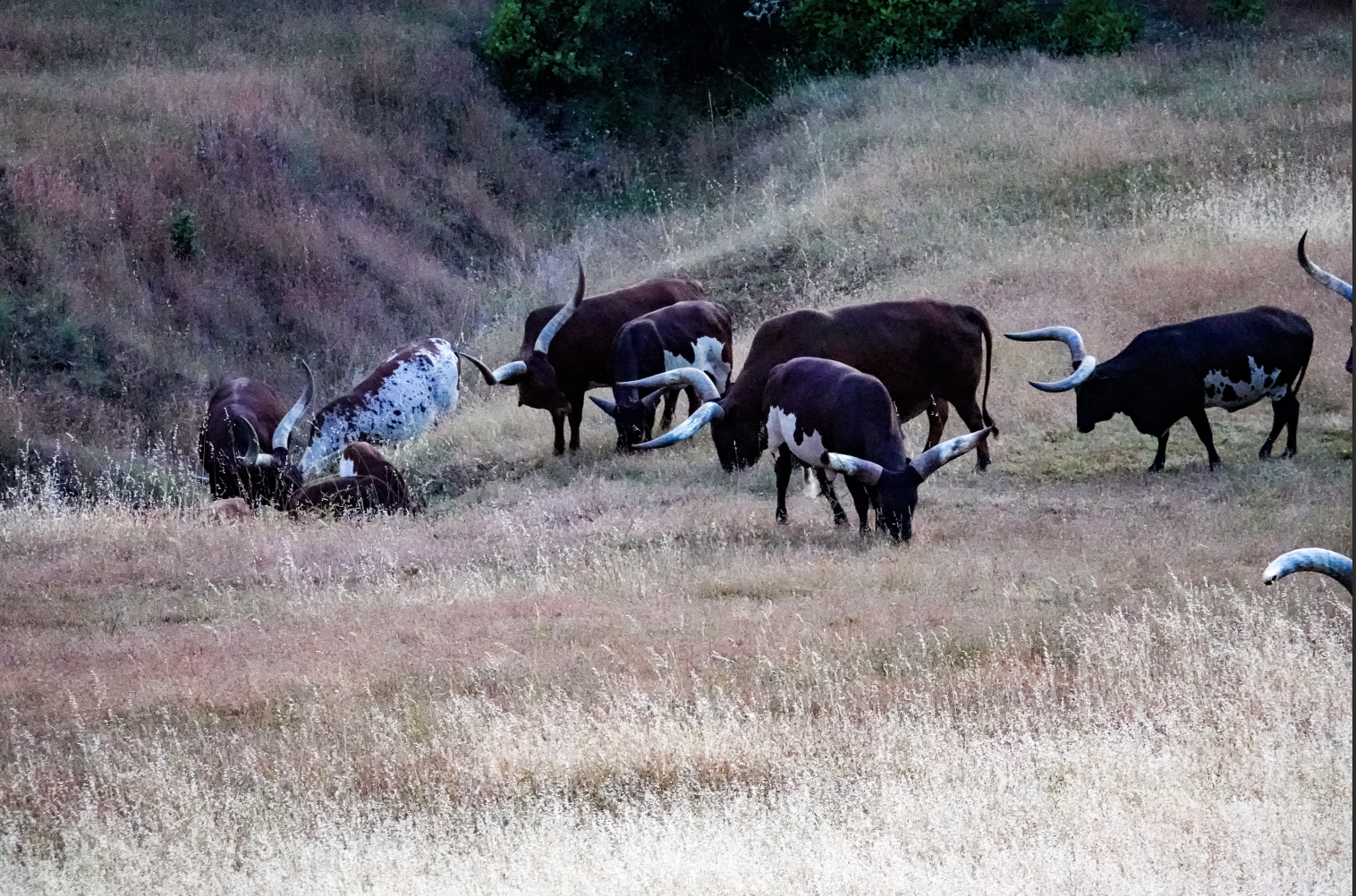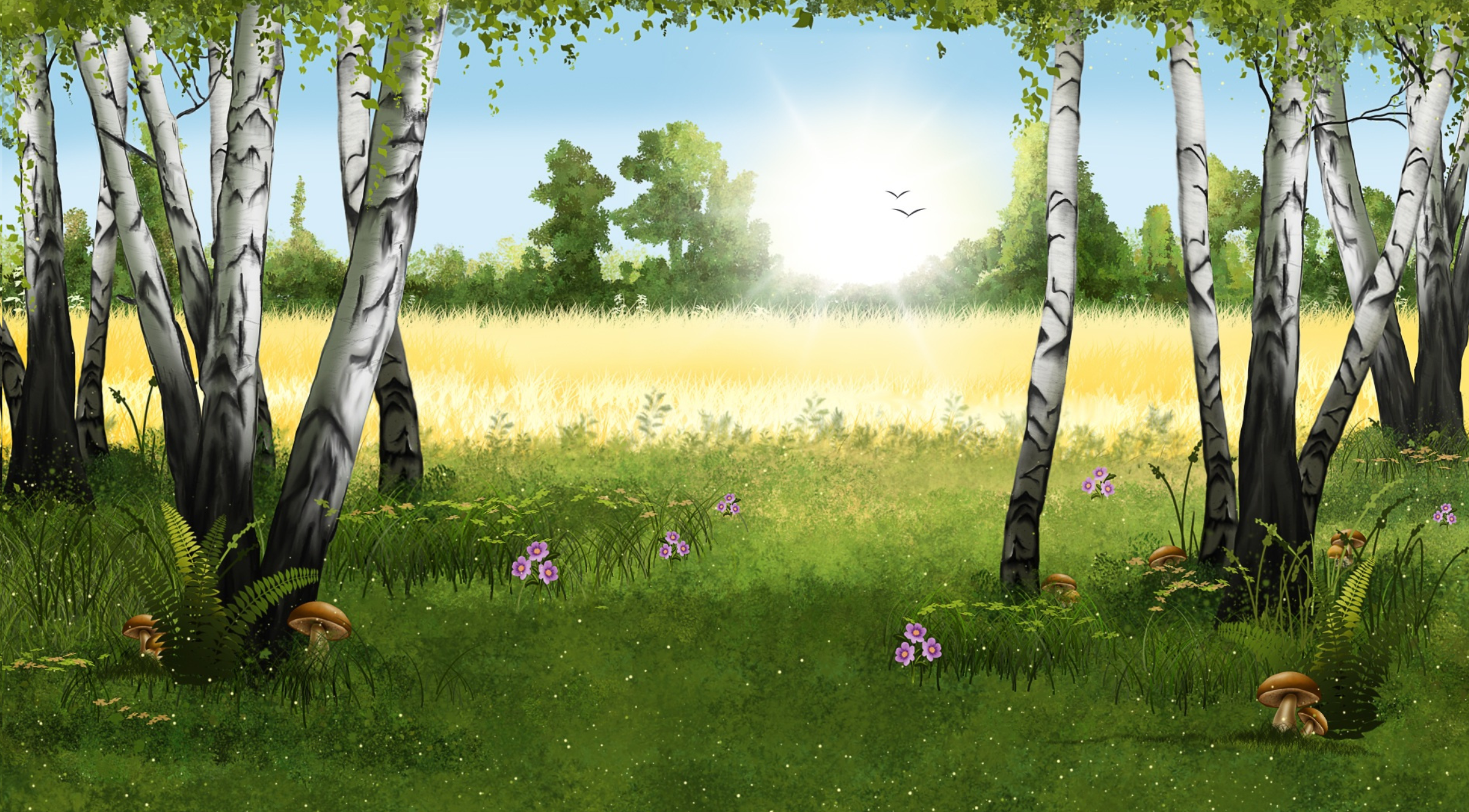I remember driving by a herd of about twenty cows near where I grew up and wondering why they walked around the same piece of property every day. Now, I understand cattle are doing more than they appear and can be the starting point for transforming an ecosystem.
Holistic grazing strategically utilizes cattle to achieve vegetation management goals, like fuel reduction to prevent the spread of wildfires and replacing invasive plants and grasses with native grasses. Many grasses native to northern California hold water in their deep roots, making them less flammable. Conversely, invasive plant species tend to grow between shrubs and perennial grasses, causing connectivity, which creates more fuel for a fire. Targeted grazing can create this disconnectivity, all the while benefiting the soil, water cycle, forests, creeks, and biodiversity (Porensky, et al., 2018).

Holistic management can restore biodiversity and bring back species that have left an area or increase the presence of an existing species. Bamberger Ranch in Texas has documented how planting native grasses with deep roots changed a bone-dry 5,500-acre preserve to a lush habitat. Bird species quadrupled, including families of eagles; and deer on the land showed an increase in average weight from 55 pounds 40 years ago to 115 pounds today. As conditions improve in a specific habitat, species want to have babies, and pollinators and birds find their way there (Porensky, et al., 2018). Holistic grazing management has the same effect as Bamberger’s strategy and can speed up the process of keeping water in the ground. But what if the cattle could turn fuel for fire into a bounty of food crops?
Conventional agricultural methods of plowing, overgrazing, or using chemicals kill the soil’s nutrients and plant health (Mangan). On the other hand, one of the most important benefits of holistic grazing is the encouragement of carbon-rich, healthy soil; just by walking, a cow can promote deeper root growth (Barker, et al). Carbon-rich soil holds water and prevents erosion, drought, and run-off associated with dry, low water tables.

Following the order of succession, healthy soil promotes agroforestry and tree planting, further enhancing the soil (Dollinger and Shibu 2018). A healthy ecosystem makes way for a healthy food forest. Edible fruit trees can exist among various food crops in the ground, a layer of shrubs, the understory layer of fruit trees, and the canopy layer. The diversity of planting can increase the amount of sun hitting raised food beds and food plants throughout the day.
A keystone of Teravana’s wildlife habitat restoration project is organizing 20 Watusi cows to graze the land, aiding in forest succession. A lot of planning is required to graze at the right time of year and day and in the strategic parts of the land. Preparation involves understanding when fire-resistant plants most tolerate grazing, mapping fencing and zoning specifics, and creating optimal health conditions for the cattle.
The team is working with neighbors in Cazadero to share cattle and further understand how we can help one another, making land in West Sonoma County more resilient and seeing those many benefits, including building food and farm systems.
REFERENCES
Barker, W. et al. Soil Health in Relation to Grazing. North Dakota State University. NDSU Central Grasslands Research Extension Center.
Dollinger, J., Jose, S. Agroforestry for soil health. Agroforest Syst 92, 213–219 (2018). https://doi.org/10.1007/s10457-018-0223-9
Mangan, Arty. Holistic Grazing: Restoring Ecosystems. Bioneers.org. https://bioneers.org/holistic-grazing-restoring-ecosystems/
Porensky, Lauren, et al. Combining active restoration and targeted grazing to establish native plants and reduce fuel loads in invaded ecosystems. 2018. Ecology and Evolution.